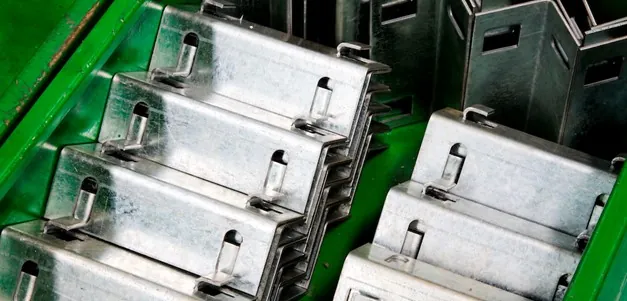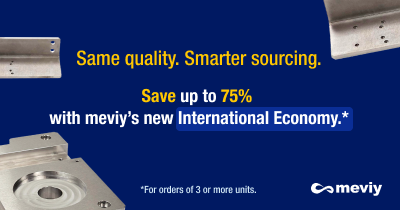BLOG » The Differences Between EN 1.4305 equiv. (SUS303) and EN 1.4301 equiv. (SUS304)
The Differences Between EN 1.4305 equiv. (SUS303) and EN 1.4301 equiv. (SUS304)
Stainless steel comes in various types, including EN 1.4305 equiv. (SUS303) and SUS304. Choosing the right material requires a comprehensive assessment of factors such as the part’s intended use, functionality, and cost considerations.
EN 1.4305 equiv. (SUS303) is a type of stainless steel that has been developed to enhance the machinability of SUS304, which is the most widely circulated stainless steel. It is particularly well-suited as a material for machining processes. However, it’s important to note that SUS303 exhibits lower corrosion resistance and weldability compared to SUS304, making it unsuitable for certain applications and environments.
In this article, we delve into the fundamentals of stainless steel, provide an overview of SUS303, and explain in detail the distinctions between EN 1.4305 equiv. (SUS303) and EN 1.4301 equiv. (SUS304). Join us in gaining a deeper understanding of the characteristics and applications of EN 1.4305 equiv. (SUS303) in the realm of stainless steel.

Basic Knowledge of Stainless Steel
Stainless steel, as the name suggests, is a corrosion-resistant alloy steel. Its formal name is “stainless steel,” and generally refers to steel that consists mainly of iron and contains at least 10.5% chromium.
There are numerous types of stainless steel, each with distinct properties. Stainless steel types are represented by three-digit numbers following “SUS”.
What is EN 1.4305 equiv. (SUS303)
EN 1.4305 equiv. (SUS303) is a type of austenitic stainless steel. It is created by adding sulfur and phosphorus to SUS304. The addition of sulfur and phosphorus reduces stickiness, making EN 1.4305 equiv. (SUS303) excellent in machinability and cutting performance. It also exhibits good resistance to galling, with minimal adhesion due to friction. While fundamentally non-magnetic, changes in crystal structure during processing may cause EN 1.4305 equiv. (SUS303) to exhibit magnetic properties.
What is EN 1.4301 equiv. (SUS304)
EN 1.4301 equiv. (SUS304), a widely used stainless steel variant, is renowned for its exceptional corrosion resistance and versatility. This austenitic stainless steel is composed of 18% chromium and 8% nickel, forming a sturdy alloy that exhibits remarkable durability and resistance to oxidation. The chromium content allows for the formation of a passive oxide layer on the surface, preventing corrosion and enhancing its longevity. With its non-magnetic properties, EN 1.4301 equiv. (SUS304) finds extensive applications in various industries, including kitchenware, architectural structures, and even in the manufacturing of industrial equipment. Its mechanical properties, including tensile strength and toughness, make SUS304 a preferred choice for applications requiring both strength and corrosion resistance. This alloy stands out in environments where exposure to corrosive elements is a concern. Understanding the distinctions between EN 1.4305 equiv. (SUS303) and EN 1.4301 equiv. (SUS304) is crucial for selecting the right material for specific applications.
Differences Between EN 1.4305 equiv. (SUS303) and EN 1.4301 equiv. (SUS304)
EN 1.4301 equiv. (SUS304) is the most widely distributed representative stainless steel. Stainless steel components sold in home centers and similar stores are mostly made of EN 1.4301 equiv. (SUS304). While the basic material properties of EN 1.4305 equiv. (SUS303) and SUS304 are the same, there are differences between the two, including:
Corrosion Resistance: The sulfur and phosphorus contained in EN 1.4305 equiv. (SUS303) react with oxygen in the air, resulting in lower corrosion resistance compared to SUS304. In environments prone to corrosion it’s advisable to use SUS304 rather than EN 1.4305 equiv. (SUS303).
Weldability: When welding EN 1.4305 equiv. (SUS303), factors like shrinkage stress can make it more susceptible to cracking. If welding is required, EN 1.4301 equiv. (SUS304) is recommended over SUS303.
Machinability: A higher content of sulfur and phosphorus reduces stickiness, enhancing machinability. Consequently, EN 1.4305 equiv. (SUS303) has superior machinability compared to EN 1.4301 equiv. (SUS304).
Price: EN 1.4305 equiv. (SUS303) tends to be slightly more expensive than EN 1.4301 equiv. (SUS304).
Distinguishing Between EN 1.4305 equiv. (SUS303) and EN 1.4301 equiv. (SUS304)
The appearance of EN 1.4305 equiv. (SUS303) and SUS304 is very similar, making visual differentiation challenging. One effective method is to compare the chips generated during cutting. Generally, chips produced from materials with high stickiness like SUS304 are connected in a continuous strand. On the other hand, chips from EN 1.4305 equiv. (SUS303), where sulfur and phosphorus are added to reduce stickiness, are finer and in a scattered state. Another method involves welding both materials and determining which welds more successfully, indicating SUS304.
Applications of EN 1.4305 equiv. (SUS303)
EN 1.4305 equiv. (SUS303) is commonly used in industrial products such as bolts, nuts, and shafts. It is also utilized in machine components. The material is often distributed in the form of round bars and is processed into various shapes.
Applications of EN 1.4301 equiv. (SUS304)
Due to its superior corrosion resistance compared to EN 1.4305 equiv. (SUS303) , EN 1.4301 equiv. (SUS304) is employed in the outer panels of trains. It is also used in areas where the silver color of the material is highlighted, such as automatic doors, escalators, pillars, and handrails. SUS304 is utilized in a range of applications, including industrial products like bolts and nuts, plant equipment such as LNG tanks and nuclear facilities, as well as in medical, pharmaceutical, and food manufacturing equipment.
Conclusion
Stainless steel, classified in the 300 series as austenitic stainless steel, is an alloy steel with added chromium to resist corrosion.
EN 1.4305 equiv. (SUS303)excels in machinability and anti-seizure properties compared to SUS304 but falls short in corrosion resistance and weldability. Both EN 1.4305 equiv. (SUS303) and EN 1.4301 equiv. (SUS304) materials are available in various shapes for machined plates, sheet metals and turning parts.
At MISUMI meviy, you can get instant quotes and processing for both materials.
